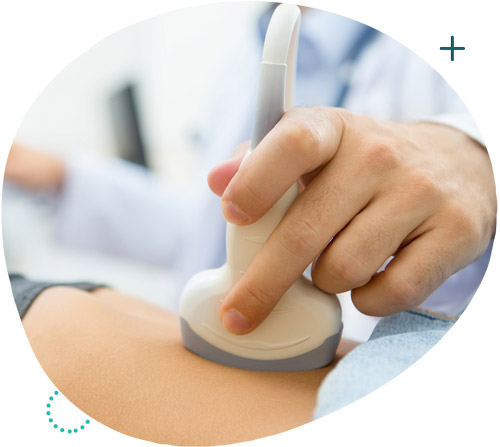This website uses cookies so that we can provide you with the best user experience possible. Cookie information is stored in your browser and performs functions such as recognising you when you return to our website and helping our team to understand which sections of the website you find most interesting and useful.
Oncology
Oncology
Endometrial cancer of the uterus
These are malignancies involving the inside of the body of the uterus, which is called the endometrium.
Frequency and age
It is the most common gynecological cancer in developed countries, with an incidence of 12.9 per 100,000 women and an average age of diagnosis of 61 years. However, it can also occur in much younger women who are of reproductive age. In these cases, which are usually diagnosed at an early stage and in some cases, treatment can be conservative until the woman gives birth. After delivery, removal of the uterus is recommended.
The most common type, and with the best prognosis, is endometrioid adenocarcinoma and is found in over 80% of endometrial cancers.
In addition to endometrial cancer (the inner wall of the uterus) there are other less common uterine cancers that involve the body of the uterus, such as sarcomas, and the management of which is similar to that of endometrial cancer.
Risk factors are prolonged exposure to estrogen (exogenous or endogenous), chronic amenorrhea (absence of period), obesity, hypertension, diabetes (sugar), early menarche, late menopause, history (Lynch syndrome 2).
On the contrary, there are factors that protect against endometrial cancer such as contraceptives (up to 50% reduction in risk), pregnancy at an older age, drinking coffee and green tea, smoking (any benefits of smoking are far less important than its disastrous consequences on human health).
Symptoms
Symptoms almost always present with painless vaginal bleeding, which should always be investigated in menopausal women.
In women of reproductive age, the investigation should be done when they experience bleeding on non-menstrual days.
The first examination at the gynecologist will be a transvaginal ultrasound with which we will have an assessment of the condition by measuring the endometrium and then if deemed necessary, a biopsy will follow, usually with curetage.
From here on, if the diagnosis is confirmed histologically, a CT and/or an MRI will give us more information about the extent of the disease and the surgical plan will be decided.
Treatment
The surgery includes removal of the uterus together with the cervix and ovaries and possibly the lymph nodes (usually applying the “sentinel” lymph node technique) depending on the initial histological and imaging control. In the early stages, the surgery is performed safely using the laparoscopy method, significantly contributing to the quick recovery of the patient.
After the surgery, having done what we call staging the disease and having the final histology, an oncology board is convened and it is decided together with medical oncologists, radiologists, radiation therapists and pathologists, whether further treatment other than surgery will be needed. This can be chemotherapy, radiotherapy, a combination, or nothing at all to ensure the lowest possible recurrence rates in the future.
In some cases where the stage is advanced, or due to the patient’s old age, the treatment is conservative and includes radiotherapy and/or hormone therapy.
In younger women and under conditions it is possible to preserve the uterus and achieve pregnancy.
Stages
Of course, the sooner the diagnosis is made, the better the prognosis.
Stage 1, the cancer is confined to the body of the uterus.
Stage 2, the cancer has spread to the cervix.
Stage 3, the cancer has spread locally to the ovaries, fallopian tubes, vagina, and/or lymph nodes.
Stage 4, the cancer has spread to the bladder, bowel and/or liver, lungs, brain.
In general, endometrial cancer, diagnosed in early stages (1 and 2), has a very good prognosis, with high cure rates, life expectancy and good quality of life.
Life expectancy
In stage 1 the expectancy exceeds 90% at 5 years after diagnosis.
In stage 2, around 75%.
In stage 3, almost 50%.
In stage 4, 15%.









